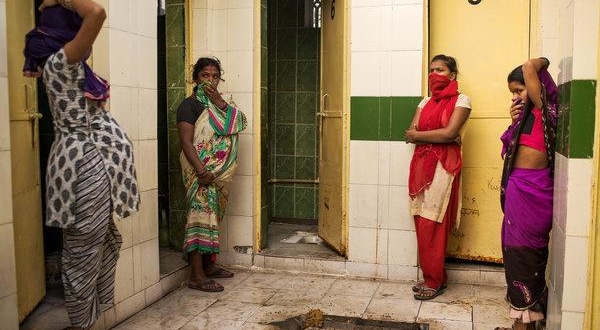Lens
Andrea Bruce captured the hardships and hazards of living with open defecation, which affects nearly one billion people.

After years covering wars in Iraq and Afghanistan, Andrea Bruce was asked by National Geographic in 2016 to undertake one of the most difficult assignments of her career.
The subject? Open defecation.
“It almost seemed so ridiculous that I had to do it,” Ms. Bruce said. “But once you start researching you realize that it’s among the most important issues today, affecting nearly a billion people. If you don’t have proper sanitation, you don’t have clean drinking water, and then you don’t have a healthy population.”

Ms. Bruce said her challenge was to take a complex story that was difficult “to make visual” and produce images that would engage and educate her audience. The photos are on display this week at the Visa Pour l’Image photography festival in Perpignan, France.
Toilets that safely dispose of waste save lives because human feces spread diseases like cholera, diarrhea, typhoid and hepatitis. But Ms. Bruce discovered in her research that 950 million people around the world — with more than half of those in India alone — routinely relieve themselves outside. Around 60 percent of the global population either have no toilet at home or one that doesn’t safely dispose of human waste, according to the United Nations, while 1.8 billion people drink water from contaminated sources.
Children are especially vulnerable to diarrhea caused by poor sanitary conditions. It is, along with the lack of clean water, the leading cause of death for those under 5 years old worldwide. In India, diarrhea kills more than 100,000 children a year.
Ms. Bruce photographed in Haiti, India and Vietnam, countries that have had varying degrees of success in providing safe indoor toilets for their citizens. The Vietnamese government made providing indoor toilets in public schools and houses a priority and has largely succeeded, Ms. Bruce said. Schoolchildren were educated on using toilets and washing hands and were encouraged to spread the practice to their families. In most communities she visited, most homes had indoor toilets and practiced “healthy sanitation,” she said.
Haiti, beset by natural disasters, a lack of infrastructure and poor sanitation, has had a more difficult path. When Hurricane Matthew hit Haiti, Ms. Bruce covered it as spot news for the National Geographic’s website, including documenting its effect on sanitation and the availability of indoor toilets for her project.
She also photographed the people she sees as the “unsung heroes of sanitation in Haiti,” the “bayakou” who often strip down and climb into pit latrines to clean them out. By hand.
“They only work at night because people throw rocks at them, and even their family members often don’t know what they do,” she said. “They’re like masked superheroes.”
India’s Prime Minister Narendra Modi campaigned on ending the unsanitary practice and set a deadline for Gandhi’s 150th birthday in October of next year. He has set aside more than $40 billion to build latrines and toilets and change public behavior. But in a country the size of India, with its large and sluggish bureaucracy, Ms. Bruce said, that ambitious target may not be met.
Open defecation is particularly dangerous for women and girls who are vulnerable to rape when they walk away from their houses to relieve themselves in private. Ms. Bruce often photographed women going out in the fields as a group, “because there’s safety in numbers,” she said. Even worse, the lack of toilets in schools often leads girls to drop out once they start menstruating because there is no privacy.
Ms. Bruce was a staff photographer for The Washington Post before leaving to become a freelancer in 2009 so she could pursue long-term international stories. She has worked extensively for The New York Times and is a member of the photographer-owned photo agency Noor Images.
Her subtle images stick out from the graphically dramatic, and at times explicit, conflict photographs that are usually exhibited at the Visa Pour l’Image festival. She was pleasantly surprised that this challenging story was chosen, she said.
“It’s not a sexy topic or as dramatic as some war zone photos, but it causes just as much death and destruction.”
James Estrin, the co-editor of Lens, joined The Times as a photographer in 1992 after years of freelancing for the newspaper and hundreds of other publications. @JamesEstrin

